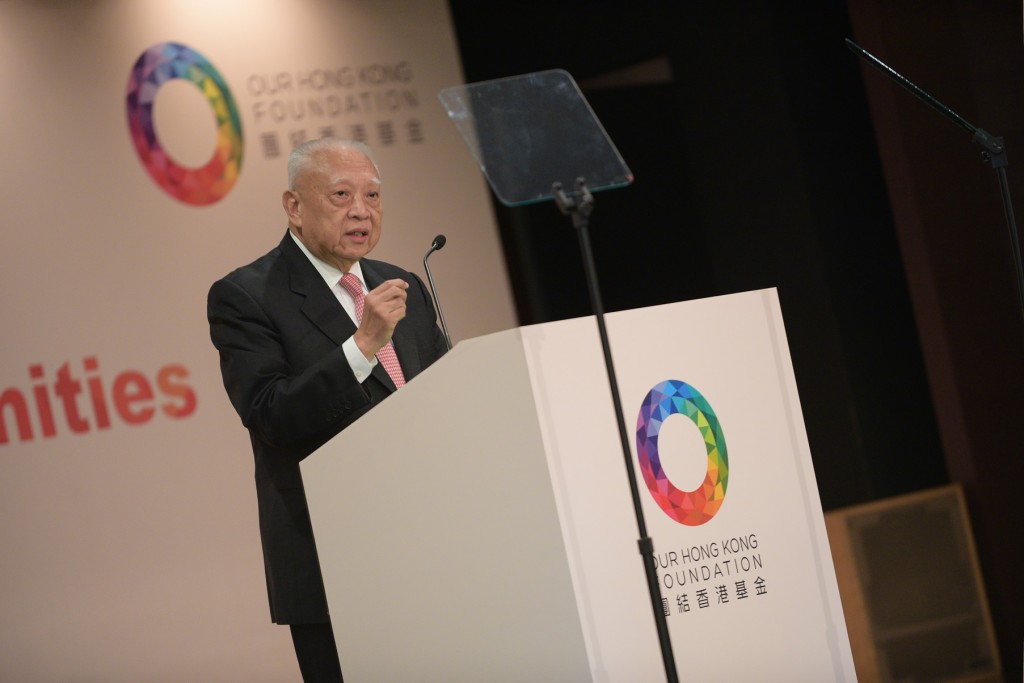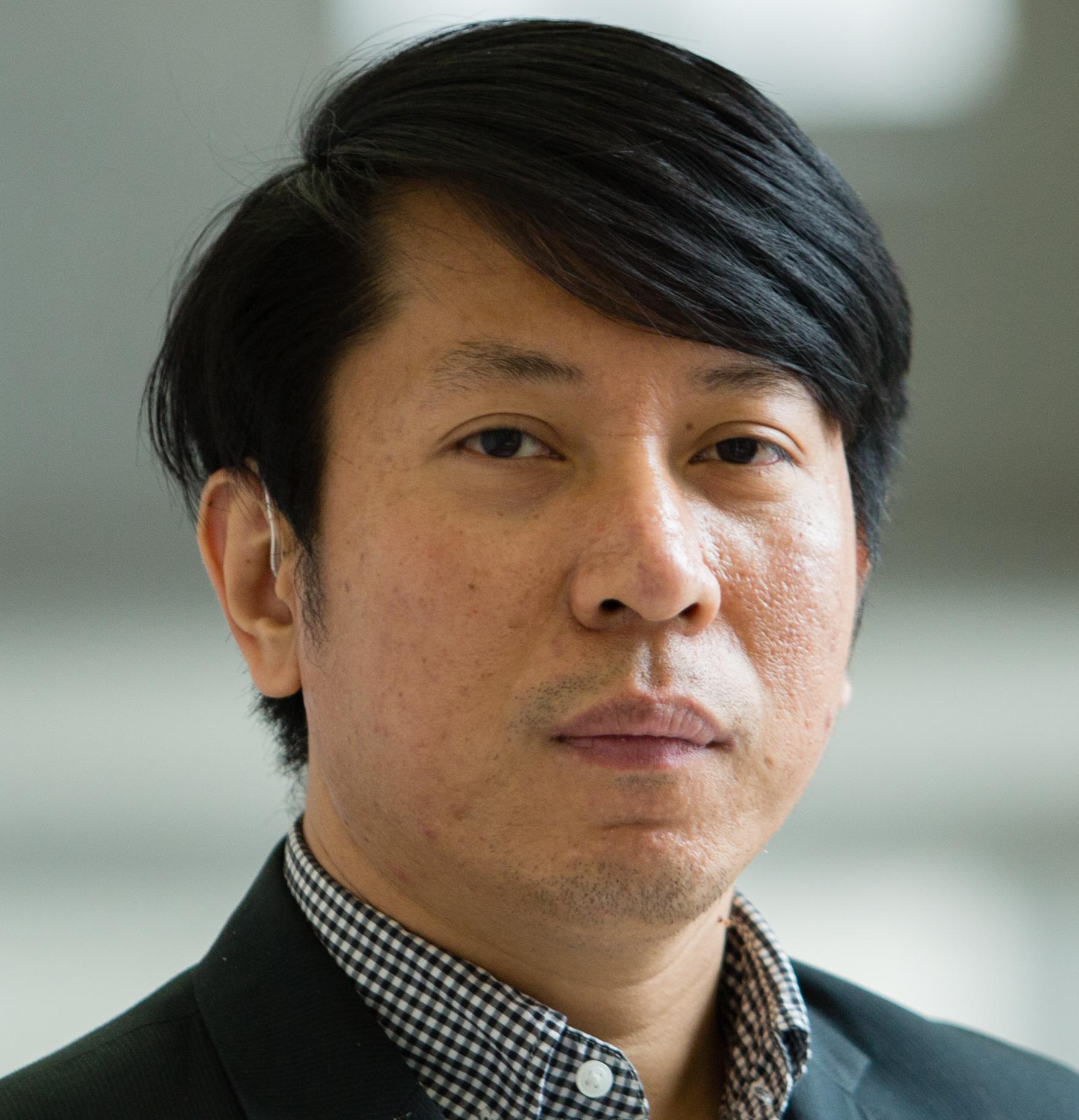The first Chief Executive of Hong Kong SAR C.H. Tung argues that the success of modern day China is not accidental. While globalization contributes to China’s success, the country’s ability to ensure a smooth leadership transition and sound policy-making, the diligence of its people, as well as the expansion of freedom liberating the entrepreneurial and innovative spirit of its citizens are key internal reasons for what Tung describes as “China’s miracle.” The following are excerpts of Tung’s speech on Dec 14 at a seminar titled “China Today – New Dimensions and New Opportunities” organized by Our Hong Kong Foundation.
China and her economic future and influence are topics on everyone’s lips – in local markets, in the academic world, and on the world stage. In this modern age of Facebook and Twitter, we constantly get snippets of information about what is happening inside China. And sometimes, you may think you know what is going on there, but sometimes you may not be so sure. China has been developing so fast that we need to be constantly on the alert to keep up with what is happening there, so that we can more intelligently assess her position today and her opportunities in the future. And this forum is put together for that very purpose.

The first Chief Executive of Hong Kong SAR C.H. Tung argues that the success of modern day China is not accidental on Dec 14 at a seminar titled “China Today – New Dimensions and New Opportunities”.
I would like to first share my own observations and experience to highlight some of the important events and developments that have shaped modern day China. Over the past few decades, I have had the privilege of observing China’s enormous success at close range – the many twists and turns and the many hard lessons that were learnt. And all I can say is that the success of modern day China is not accidental. It is based on the adherence to her many fundamental beliefs. One of these beliefs is the need for interdependence and collaboration with the outside world. China’s desire to putting this principle into practice could not be better demonstrated than by the diplomacy championed by President Xi Jinping in the past two and a half months.
During this period of time, President Xi undertook six state visits, beginning with the United States, followed by the United Kingdom, Vietnam, Singapore, Zimbabwe and South Africa. In between those meetings, he also attended 5 multilateral conferences, beginning with a number of important meetings at the United Nations in New York, and then on to the G20 Summit in Turkey, followed by the APEC meeting in Manila, the climate change conference in Paris, and, finally, the summit at the Forum on China-Africa Cooperation in Johannesburg. While at the fringes of the G20 Summit, he also attended the BRIC head of state informal meeting. Furthermore, taking advantage of the multilateral meetings, Mr. Xi met more than 30 state or government leaders on the fringes of the multilateral meetings for separate bilateral discussions over issues of mutual interest. During those two and a half months, in between overseas visits, Mr. Xi attended to the affairs of the state in Beijing. During that time, he separately received visits from Chancellor Merkel of Germany and President Hollande of France for bilateral meetings.
The intensity of President Xi’s activities highlights the great importance China attaches to good international relations. And his message to his hosts overseas was loud and clear – that China desires to pursue peace and shared prosperity under the principles of mutual respect, non-interference, and leveraging each other’s strengths to create win-win situations. President Xi stressed China’s recognition that we live in an interdependent world, a world that faces many challenges as well as changes; and it is only through collaboration that we can overcome the many difficulties the world faces, such as economic growth, fighting terrorism, or overcoming climate change.
In these gatherings, President Xi and his colleagues were received with great respect and enthusiasm everywhere they went.
I would now like to elaborate on some of China’s contributions internationally in recent years. First, China played a significant role in helping the world to recover from the global financial crisis of 2008, contributing over 50% of global economic growth from 2009 to 2011. More recently, even though the Chinese economy has entered into a “new normal,” growing at about 7%, her contribution to world growth still stands at about 30%.
Second, China has been playing a significant role in helping to resolve or mitigate crises in global hot-spots, such as North Korea, Afghanistan, and Iran. She also leads all other UN Security Council Permanent Member nations in providing UN peace keeping forces around the world.
Third, China is looking for ways to bolster economic growth globally, but particularly in the developing world. Her “One Belt / One Road” strategy will not only help China, but also many countries in Southeast Asia, South Asia, and Central Asia. Countries in the Middle East and Europe may also benefit. The support for Asian Investment and Infrastructure Bank suggests enormous interest of many countries to turn this initiative into reality. In Africa, at the recent China-Africa summit in Johannesburg, the two partners sought ways to leverage China’s “new normal” economy, and Africa’s effort to move away from overreliance on natural resources, to another win-win situation. The meeting ended on a hopeful note.
Fourth, we should all rejoice that the Paris climate change conferences have come to a successful conclusion. Since Copenhagen’s unsuccessful conference, China’s national policy has been to work toward a successful conclusion in Paris. Some two years ago, China and the United States, as the two largest emitters of greenhouse gases, agreed to together take a strong lead to ensure the Paris conference will come to a successful conclusion. This has now come to fruition.
I hope this can give you an idea of how much China has become engaged with the rest of the world.
Insights from the Past
Let me now move on to the topic of China’s past and present.
China today is a story of hope and optimism. China’s past is a different story, and appreciating her past is one way to better assess her future.
China’s decline began towards the end of the Qing Dynasty. The revolution in October 1911, which was started by Dr. Sun Yat-sen, brought about the fall of the Qing Dynasty, and, at the same time, ushered in high hopes for China’s renewal. But unfortunately chaos, warlordism, civil war and the Japanese invasion and occupation ensued, all of which caused a prolonged period of pain and destruction.
It was not until 1949 that the People’s Republic of China was established. But, by that time, after years of disorder and devastation, the country was financially bankrupt and there was hunger in parts of the country. Infrastructure, housing, schools, health care facilities and other social welfare services needed to be built. New political institutions needed to be established. The work ahead was enormous, but, at last, the country was united as one and true nation building could begin.
Of course, mistakes were made during the Cultural Revolution. But since the reform and opening up policy, which was initiated by Deng Xiaoping in 1978, real development took hold, launching China on an irreversible trajectory toward modern statehood.
Ascendance to the world stage Today
Today, a market economy is thriving. Essential physical infrastructure has been built. Education, health care and other social services has been made widely available. Since 1978, for over thirty years the economy expanded at a rate of close to 10% per annum. Today, even under the new normal, the economy is expanding at 7%. Urbanization has progressed and livelihoods have improved dramatically. Throughout all this, 700 million people were lifted out of poverty.
Today, China is the second largest economy in the world, holds the world’s largest foreign exchange reserves, and is one of the two largest trading nations in the world. Never before in the history of mankind, has so much been achieved for so many people in such a short period of time.
Many wonder how China’s miracle has come about. Some of the reasons are external. The unprecedented expansion of global trade and the heightened use of science and technology to improve productivity globally have benefited China to a great extent. Indeed, China has been able to seize upon these unique opportunities very effectively.
But more important are the internal reasons. First, the smooth transfer of leadership, based on meritocracy has been institutionalized. Second, is the ability of the Chinese leadership to formulate sound long-term macroeconomic and geopolitical policies, and to effectively implement very complex policy initiatives. Leaders, under the guidance of their ideology and principles, were not intimidated by the necessity to challenge old thinking and make fresh changes. They responded promptly and acted flexibly. This mindset is the key to set China on the trajectory of high-speed growth.
Third, is because of the hard work of the Chinese people and their determination to succeed. Additionally, the expansion of freedom in the country has lifted the innate entrepreneurial and innovative spirit of the Chinese people. Today, private sector enterprises account for more than 60% of the GDP of the country, and that figure is continuing to rise.
Throughout this period since reform and opening, China’s singular focus was on speeding growth and lifting people out of poverty. Post 2008, the focus was also on combating the financial crisis at home and globally. They were the right priorities, but unfortunately, insufficient attention was paid to other important issues, such as on environmental protection and governance, the lack of which exacerbated corruption. Fortunately, China’s political system can respond quickly and effectively to correct these errors. This is being done, and being done with the support of the people. Indeed, initial results are encouraging.
A Vision for the Future
So much about the past and the present. What about the future?
To understand what China is going through, we need to know her vision of the future, and visualize her roadmap and blueprint that have been laid out.
Objective of 2049
Let me talk about this vision. By 2049 when the People’s Republic marks its centennial, China’s vision is to join the ranks of the developed countries of the world. What we would expect to see is that the already giant economy will once again transform itself in the decades towards that next centenary. This will not just be an economic target alone. China’s leadership well recognizes that a pure economic target is not enough. A well-developed economy, a fair distribution of wealth, a decent living standard, a healthy environment, a civil and upright society, and a just society governed by the rule of law – this is China’s vision for the next few decades. To that end, its economic structure needs to be adjusted accordingly and growth will be more focused on overall quality rather than quantity.
So while China’s vision is clear, how will she get there?
The strategic roadmap and blueprint for the run-up to 2020
These days, one often reads or hears about corrupt officials or executives of SOEs getting prosecuted. Indeed, the anti-corruption campaign is an important part of China’s four-pronged nation building strategy and a critical part of its vision. The strategy is to build not only a well-off society, but also further reform the social and political institutions to ensure a fair, equitable society governed by law rather than individuals, and led by a party that’s clean, conscientious and cares for her people.
With regard to the 13th Five-Year Plan, the timetable is for the National People’s Congress to pass the plan in March of next year. In this plan, China expects her GDP to double by 2020, as compared to that of 2010. Chinese leaders understood that the 10% per annum growth rate since reform and opening began in 1978 is unsustainable. Through this new Five-Year Plan, China will take a path of a “New Normal,” moving away from an overreliance on exports, investments, and cheap labor, to one that relies on consumption, on the services sector, and on science, technology and knowledge.
This “New Normal” holds the key for future success. It is supported by five anchors. The first is innovation, which can move the economy forward; second, is coordinated development of her various regions to avoid duplication; third is sustainable development; fourth is continued reform and opening-up; and fifth is the sharing of prosperity for all. For a country of this size, this “New Normal” is a brave new world, but it is the only way to move forward.
The country is still faced with enormous challenges, particularly in the areas of industrial overcapacity, an ageing society, the need for healthcare improvements, and the eradication of poverty. All these challenges will be tackled. Indeed, the upcoming Five-Year Plan vows that the remaining 70 million people who still live in poverty in China shall be lifted out of poverty by 2020.
Realizing China’s vision, roadmap and blueprint, is not easy. The road is fraught with challenges, predictable and unpredictable, domestic and international. However, there is reason to be optimistic:
1) China will benefit from the enormous size of her economy, a huge population, a large and maturing middle-class market, together with progress in science and technology.
2) Chinese leaders clearly understand that only with persistent reform, the implementation of the rule of law, the building of a just society, the sharing of prosperity, and leadership by a clean, conscientious party, will China be able to achieve its economic and social development goals.
3) Internationally, China will do her best to embrace peace and shared prosperity, growing together with its neighbors and beyond to achieve better standards of living. As the Chinese saying goes, “peace with neighbors brings prosperity at home.” Even for its own self-interest, China will develop and maintain a good neighbor policy while keeping amicable relations with other big powers based on the new concept of major power relationships. China will also continue her effort to deepen and to broaden her opening up to the outside world.
Realizing Vision 2049 is realizing the Chinese dream. 2049 is many years away. The road forward will be full of challenges, both domestic and international. But, given what we have achieved in the last 66 years since the establishment of the People’s Republic of China, I am full of hope that, with the political institutions and the support of the hard-working people, there is a good chance to deliver that vision and dream.

